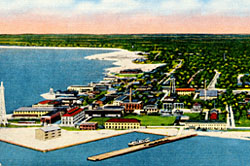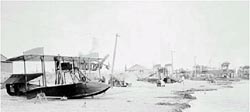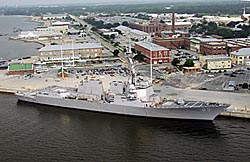
Pensacola Naval Air Station was the United States' first permanent naval air station, the first Navy pilot training center and the first naval installation to send pilots into combat. In 1911 the Navy secured an appropriation from Congress for a naval air service and within two years Secretary of the Navy Josephus Daniels ordered the creation of the first permanent naval air station at Pensacola, Florida, where the climate favored year-round flying. The entire command that arrived at Pensacola Naval Aeronautic Station in January 1914 consisted of six qualified pilots, 23 enlisted men, seven seaplanes, some spare parts and a few canvas hangars. During the station's first three years it produced many firsts, including altitude records, the first catapult launch of an aircraft from a ship and the Navy's first fatal crash.

With the onset of WWI, naval aviation expanded rapidly, leading to the establishment of additional training bases. Pensacola remained a major flight center and the first aerographical officer reported for duty here, the Navy's first aircraft carrier conducted experiments here and the Navy's aerial photography school relocated here. Between 1935 and 1939 the air station expanded its facilities to include aviation mechanics and aviation medicine. Within the historic district are 55 frame and brick buildings, including residential, administrative and maintenance facilities. Particularly notable are the octagonal Armory and Chapel (1854) and six metal seaplane hangers (1916-1918).

Within nine days after the Japanese attack on Pearl Harbor Pensacola Naval Air Station adjusted its training schedule to accommodate 2,300 students per month, a 300 percent increase that produced nearly 20,000 pilots by mid-1943. These Pensacola-trained Navy and Marine fliers sank 63 German submarines and 161 Japanese warships and destroyed more than 15,000 Japanese aircraft while losing 451 aircraft to Japanese fliers. Pensacola made similar contributions to the U.S. military effort in Korea and continues its leadership role today as the headquarters for the Chief of Naval Education and Training.
Visit the National Park Service Travel American Aviation to learn more about Aviation related Historic Sites.
Last updated: August 29, 2017
